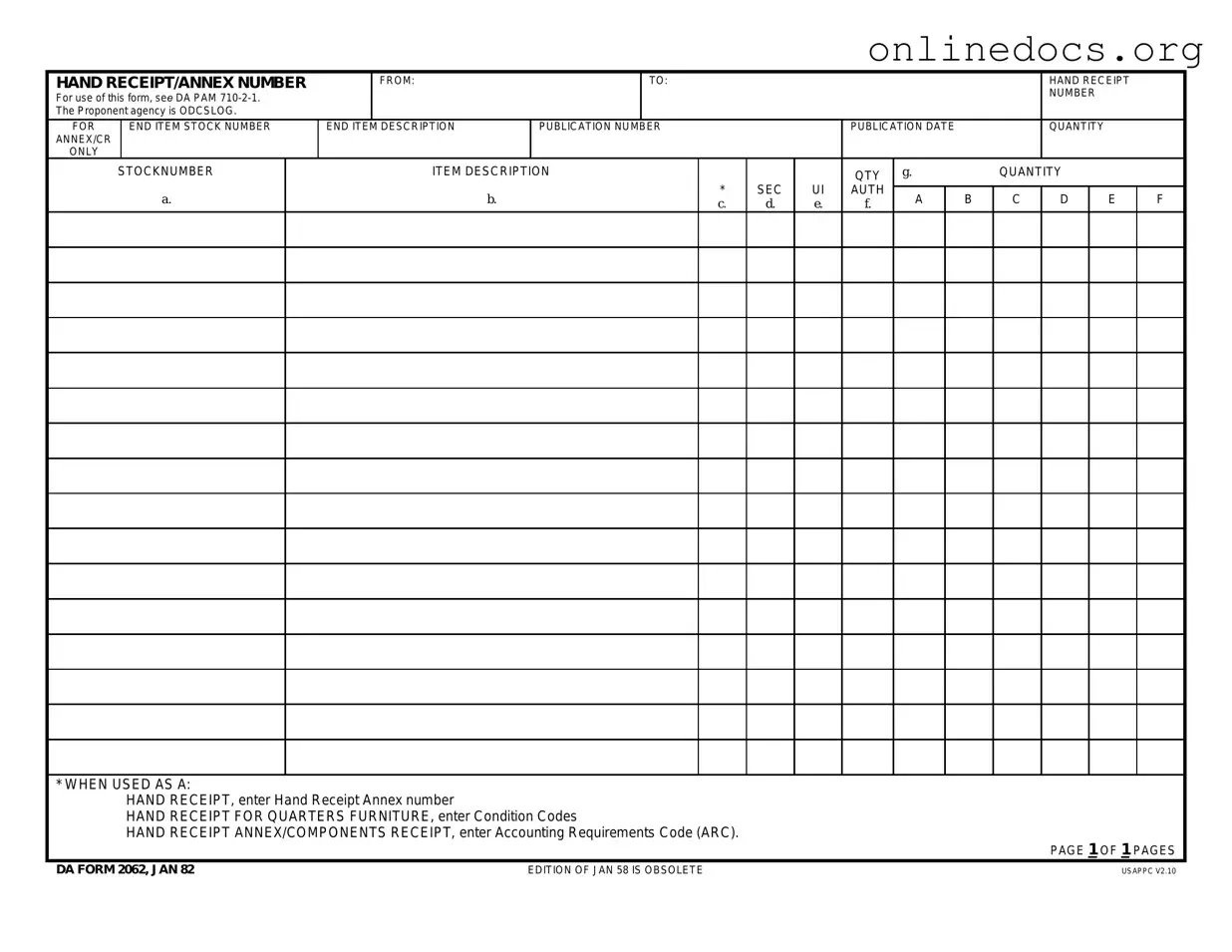The DA Form 2062, commonly known as the hand receipt, is often compared to the DD Form 250. Both documents serve as a record of property transfer. The DD Form 250 is specifically used for the acceptance of supplies and services. While the DA Form 2062 tracks the handover of items between individuals or units, the DD Form 250 formalizes the acceptance of goods and services in contracts. Each form ensures accountability and traceability in the management of military assets.
Another similar document is the DA Form 3161, which is used for the temporary transfer of property. Like the DA Form 2062, it records the details of items being transferred. However, the DA Form 3161 is specifically for temporary handovers, such as when equipment is loaned out for a short period. This form helps maintain visibility of property that is not permanently transferred, ensuring that all items are accounted for during their temporary use.
The DA Form 3749 is also relevant, as it serves as a hand receipt for sensitive items. This form is similar to the DA Form 2062 in that it tracks the issuance of property, but it focuses on items that require special handling due to their nature. By using the DA Form 3749, units can ensure that sensitive items are properly monitored and safeguarded, providing an additional layer of accountability.
In addition, the DA Form 7000 is used for the transfer of property between units. This document functions similarly to the DA Form 2062, as it records the transfer of property, but it is specifically designed for unit-to-unit transfers. This form helps streamline the process of moving equipment within the military, ensuring that all parties involved are aware of the transaction and its details.
The SF 122, known as the Transfer Order, is another document that shares similarities with the DA Form 2062. It is used for the transfer of excess personal property. While the DA Form 2062 focuses on the hand receipt process, the SF 122 is a formal order that initiates the transfer of property deemed excess. Both documents play a role in maintaining accurate records of property management within the military.
The DA Form 450 is also comparable, as it serves as a record for the transfer of accountable property. This form is used in situations where property is transferred between individuals or units, much like the DA Form 2062. The DA Form 450, however, is specifically for accountable property, ensuring that all items that require tracking are properly documented during the transfer process.
For those looking to understand the process better, additional information about the Employment Verification requirements can be found by visiting this link: important details on Employment Verification processes.
The DA Form 1687, which is the Notice of Delegation of Authority, is similar in that it establishes accountability for property. While it does not serve as a hand receipt, it designates who is responsible for specific items. This document is crucial for ensuring that the right individuals are held accountable for the property under their care, complementing the tracking process established by the DA Form 2062.
Lastly, the DA Form 2062-1 is a variant of the DA Form 2062 that specifically addresses the issue of property accountability. This form is used in conjunction with the original hand receipt to provide additional details or to document changes in property status. Both forms are essential for maintaining accurate records and ensuring that all property is accounted for throughout its lifecycle.
